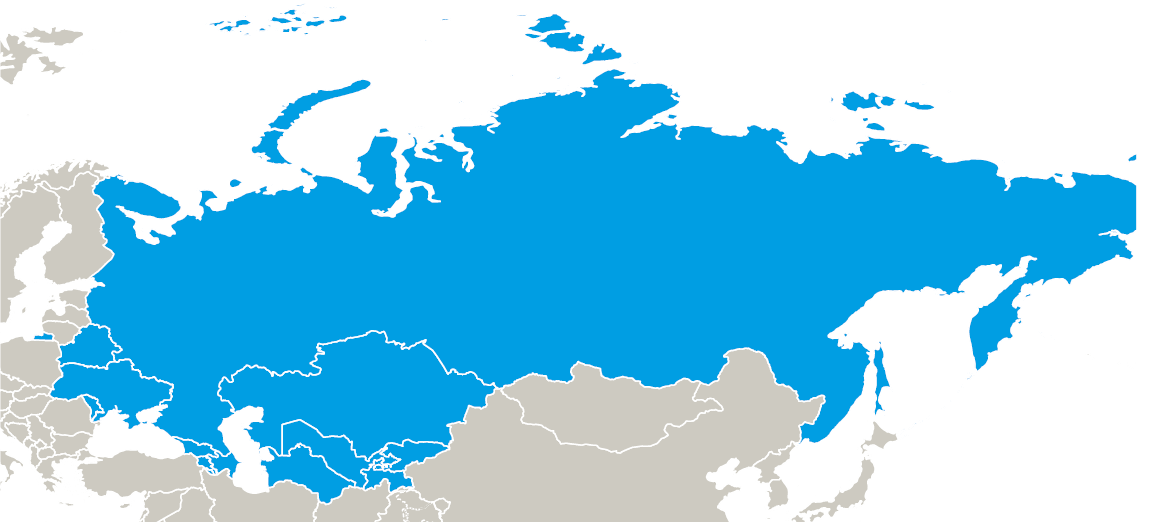The region "Eastern Europe and Central Asia" consists of the countries of the former Union of Soviet Socialist Republics (USSR), which gained their independence in 1991. An exception are the Baltic countries, which today belong to the EU. Russia's economic relations with the countries of the South Caucasus (Azerbaijan, Georgia and Armenia) and Central Asia (Kazakhstan, Uzbekistan, Turkmenistan, Tajikistan and Kyrgyzstan) remain close. Economic cooperation took off in 2010 and led to the establishment of the Eurasian Economic Union (EEU) in 2015, a free trade area with a population of 190 million that accounts for 3% of global GDP. Armenia and Kyrgyzstan joined the EAEU in August 2015, and Uzbekistan became an observer member in 2020.
Several countries of the region (Ukraine, Moldova, Georgia) wish for a future in Europe and are seeking rapprochement or even accession to the European Union (EU). Russia accounts for 70% of Switzerland's trade with the region, followed by Ukraine (14%), Kazakhstan (6%) and Belarus (3%). Switzerland has concluded bilateral trade and cooperation agreements with all countries of the region (with the exception of Turkmenistan). Ukraine, Kyrgyzstan and Tajikistan are priority countries for Swiss development cooperation.
Switzerland has adopted the sanctions introduced by the EU following Russia's invasion of Ukraine in February 2022.






